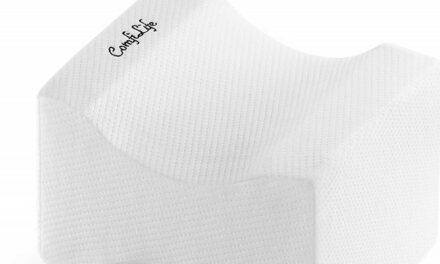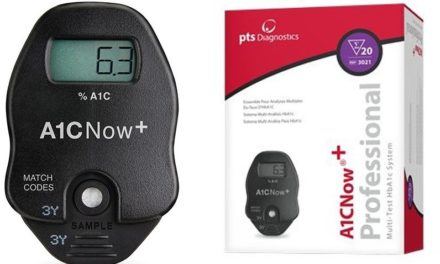On many occasions, mostly when we fall sick, we normally feel our body with the back of our palm in order to ascertain if the body is too cold or hot. Those two states ‘hot’ or ‘cold’ indicates the body temperate. In this article, we will be focusing on one of the ‘trendy’ ways of measuring body temperature, that is by using an infrared forehead thermometer. Most importantly, are infrared forehead thermometers safe? Let’s find out.
Before that let’s get our head around what a thermometer really is.
What is a Thermometer?
Thermometers cannot be discussed without mentioning the term temperature.
Temperature is the measure of how cold or hot a body, object or place is. This temperature states are expressed with several scales and indicate the direction of heat flow either from a hot body (higher temperature) to a cold body (lower temperature).
When taking the measure of the temperature of objects, the approximate kinetic energy of the object’s particles influences the temperature of the objects, when the particles move faster, the temperature rises.
A thermometer is science made tool used in the measurement of the temperature. The term thermometer was carved from two Latin terms “thermo”,
which means ” heat” and “metrum” which means “measure”.
Thermometers that were made in recent years consists of two main elements, a device which takes the reading of the temperature and a sensor that detects the change in the temperature.
Thermometers are used in so many fields such as technological institutes, health, meteorological and science research institutes.
Temperature Reading
When thermometers are used in taking the temperature reading, there are definite scales used in the measurement, these scales include Celsius, Fahrenheit, and Kelvin.
-
Celsius
The Celsius scale was initially called or referred to as centigrade. It was developed in the year 1742 by an astronomer called Andre Celsius (1701-1744) who hails from Sweden. The scale bore the name centigrade till the year 1948 when it was changed to Celsius in honor of the man Andre Celsius who invented the scale.
-
Fahrenheit
A physicist from Germany, Daniel Gabriel Fahrenheit (1886-1736) built a mercury thermometer and calibrated it to standard scale Fahrenheit which was named after him.
-
Kelvin
The third scale, which is the Kelvin scale, is the recognized definite standard unit for temperature. The Kelvin scale is denoted as K, the degree sign (°) is not added to it.
Types of Thermometers
Thermometers are of many types, and these types depend on the procedures or mechanism involved in order to determine the temperature and also the mode of use.
In this content, you learn about the common types of thermometers.
Thermometers are of six types when classified according to their mode of operation.
These six types are;
1. Digital thermometers
This set of thermometers are the latest. They possess a digital screen instead of gases or liquids coupled with temperature scales, the digital screen displays the temperature reading within a few seconds.
2. Infrared thermometers
Unlike the other thermometer types, the infrared thermometers have a unique feature. That feature is, it doesn’t require contact in order to determine the temperature. “Temperature guns” as they are mainly called by people, are handheld and has a gun-like shape.
3. Bimetal or bimetallic thermometers
This type of thermometers are more mechanical, and they capitalise on the principle of how two different metals expand at various heat rates.
They contain two different strips of metals which reacts to temperature change and can be read along a scale.
Bimetallic thermometers are durable, affordable and straightforward.
4. Manometric thermometers
They are also called “vapour pressure thermometers” or “pressure-filled thermometers”. They work by determining the change in pressure of liquids or gases.
Manometric thermometers may contain liquid, gas, condensation (diethyl, alcohol, chloromethane) or mercury.
5. Gas thermometers
This thermometer type works by reacting to the changes in volume or pressure of a gas in the thermometers. Gas thermometers may contain any gas, although hydrogen gas is the most popular choice.
6. Liquid-in-glass thermometers
This is the most ancient and popular type of thermometer, the mode of operation is very simple. It contains a glass bulb and stem which is filled with an active liquid either alcohol or mercury and inert gas, as the temperature increases and decreases, the liquid increases and decreases respectively.
Meanwhile, the thermometer types mentioned above are all beneficial in various fields ranging from medical, industrial, scientific or cooking fields.
Moreover, it would be good to discuss a little more about thermometers used for healthcare purposes (clinical thermometers), because they are the most common type and mostly used by people.
Clinical Thermometers
These thermometers are used in homes and hospitals, and they are of 6 common types:
1. Infrared thermometers
Normally placed in the person’s ear or forehead in order to take the reading of the temperature. It is fast and precisely not reliable.
2. Digital thermometers
They are the new and fast-growing set of thermometers, and they are taking over the liquid in glass thermometers. They can be placed in the armpit and rectal parts of the body. They are quick and accurate.
3. Glass and mercury thermometers
These types are the primitive set of thermometers which are placed under the tongue when taking a temperature reading.
The mercury rises and falls in respect to temperature change of the body, but because of fear of the toxic nature of mercury, other thermometer types were recommended and adopted.
4. Plastic strip thermometers
These particular type of thermometer doesn’t give an actual temperature reading, they simply act as an indicator to temperature change.
The strips are used by placing them on the forehead.
5. Basal thermometers
This type is primarily for women, it is used in tracking the ovulation process. They are also accurate to some extent.
6. Alcohol filled thermometers
Serves as a safer substitute for mercury in glass thermometers, they contain coloured alcohol which rises when the temperature increases. They are somehow slow compared to the other thermometers

Tip: Having a fever and muscle pain? This is when you should see your doctor.
What are Forehead Thermometers?
Forehead thermometers are handheld thermometers used to check the body temperature by directing the ultra-sensitive sensors to the forehead without making contact with the body (infrared), and then taking a temperature reading through the digital screen.
Types of Forehead Thermometers
There are several types of forehead thermometers produced all over the world.
Below are few of the popular forehead thermometer types:
- Braun infrared forehead thermometer.
- Exergen forehead thermometer.
- iHealth forehead thermometer.
- iProven DMT-489
- ThermoDectect pro
- Vicks cormfortfkex.
How Do Forehead Thermometers Work?
Forehead thermometers are accurate and less stressful to use. They work by reading the temperature of the temporary artery that leads to the heart through the carotid artery.
Infrared forehead thermometers work by directing infrared light from a body to a thermopile which acts as the detector.
The primary duty of the thermopile is to change thermal energy to electrical energy, as the electrical energy increases the hotter the body is.
Benefits of Infrared Thermometers
This type of thermometer gives temperature readings based on the thermal radiation given off by an object. They also come with an array of benefits and are worth purchasing.
- They are convenient.
- They are portable.
- They are the most accurate substitute for oral and rectal digital thermometers.
- They are durable.
- The temperature reading doesn’t take time before displaying the reading (they are fast).
- Measurement might be taken from a distance, unlike the traditional thermometers that usually require physical contact.
- You can take readings or measurements from a moving object
- Reduces risk of contamination.
Limitations of Infrared Thermometers
Infrared thermometers despite their active functions and usefulness, their activities still depend solely on how well it been used by the user, because infrared thermometers also have limitations.
Some of these limitations are:
- The infrared thermometers are affected and influenced by environmental factors like high humidity, dust or other similar factors.
- They cannot take a temperature reading of liquids and gases.
- They can be affected by electromagnetic wave strength of three more volts per meter.
- Infrared thermometers are usually adjusted depending on the body been measured.
- They are accurate to some extent but not solely reliable.
Are Forehead Thermometers Accurate? – The Accuracy of Forehead Thermometers
The accuracy of thermometers is one of the main factors considered when buying or making use of thermometers. This involves how reliable the results gotten after the temperature check by the thermometers are.
Though infrared thermometers are thought to be accurate but, the temporal thermometers as they are also called, are not really reliable in terms of accuracy.
The study made by a group of Texas researchers discovered that the temperature results gotten from the volunteers are actually lower than the actual body temperature.
A doctor in the Institute for Exercise and Environmental Medicine at the Presbyterian Hospital in Dallas, Dr. Craig G Crandall, stated that infrared thermometers shouldn’t be trusted solely. However, they’re accurate to some degree.
According to Dr Crandall and his team, the ancient rectal temperature check approach is known to be the best way to take a temperature reading. Most adults are not really comfortable with the rectal approach, so forehead, armpit or under the tongue became good alternatives.

Tip: Feeling lightheaded? Essential oils may help you.
When are Forehead Thermometers Inaccurate?
The inaccuracy of forehead thermometers depends on some factors ranging from natural factors to improper use of the forehead thermometers.
These factors may include:
- The temperature reading taken with forehead thermometers can be inaccurate if the volunteer or person being tested is sweating.
- Natural and environmental factors like dust and high humidity can also affect forehead thermometers, thereby making them give inaccurate readings.
- Improper use or lack of application skills can also influence inaccuracy.
When taking temperature reading with forehead thermometers, make sure the ultrasensitive sensors are properly directed to the forehead while avoiding the hair region.
- Reports from the research made on forehead thermometers by Amazon claims that forehead thermometers give inconsistent readings within a small period of time. This inconsistency is also an attribute of inaccuracy.
What is the Difference of Forehead Thermometers From Ear Thermometers?
Forehead thermometers and ear thermometers are two different models (types) of thermometers which share differences ranging from how they are used, their accuracy and other factors that influence both thermometer types.
We have already discussed forehead thermometers in this article, so it would be appropriate to do some justice to Ear Thermometers.
Ear Thermometers
Ear thermometers were invented by Dr. Theodor H Benzinger in the year 1964.
Tympanic thermometers like its also called are used to take a temperature reading of the body through the ear canal. The reason for the ear thermometers was to record the temperature of the human brain (the hypothalamus). This can be possible because the ear canal shares blood vessels with the hypothalamus.
The Difference
Differences between the forehead and ear thermometers are:
- Forehead thermometers, unlike ear thermometers, are used by directing the infrared sensors to the forehead region, while the ear thermometers are used by placing the thermometers in the ear canal.
- The ear thermometers are known to be more sensitive than the forehead thermometers.
- Ear (tympanic) thermometer are not suitable for children below 6 years old, but forehead (temporal artery) thermometers are convenient for both old and young.
The above mentioned are the differences between the forehead and ear thermometers. Still, we must know that both models have infrared sensors, and they both serve the same purpose (temperature reading) but with different methods of approach.

Tip: Did you know some sinus problems can cause high blood pressure?
Do Forehead Thermometers Emit Radiation?
Many people are scared about the infrared light emitted by the forehead thermometers for the of a fear of being exposed to radiation which we all know can be harmful to the body. So, having this knowledge, it won’t be bad to ask “Do forehead thermometers emit radiation?”
The answer is ‘No’.
A good infrared forehead thermometer doesn’t emit radiation, what they do is, they react with infrared radiations from the skin of the person being tested. At the same time, the thermopile converts the heat energy to electrical energy, thereby giving scores of the person’s temperature.
Are Infrared Forehead Thermometers Safe?
I came across some posts on some social media platforms saying that the infrared thermometers are harmful and therefore not good for the health of mankind. They claimed it affects the eye, the immune system and neurons. I was surprised and also felt like laughing at the same time.
The infrared thermometers are used in so many countries in the world both in developed and developing countries and most importantly they were approved by the health organizations like World Health Organization (WHO) and Food and Drug Administration (FDA).
If these infrared thermometers were harmful as claimed, they won’t be approved to be used by the masses.
Some group of researchers around the world have also made reports to create awareness that infrared thermometers are not as harmful as claimed by several people. A group is known as fact-checkers also joined the fight to debunk the false information, that the infrared thermometers are harmful. They explained the mechanism of the infrared light which had been a significant concern by the people and stated that the infrared light is not harmful to the human body.
With these facts and information on the safety of infrared thermometers, we can agree that:
- Infrared thermometers don’t affect the eye.
- Infrared thermometers don’t cause damage to the neurons.
- Infrared thermometers do not affect the immune system.
- Infrared thermometers are safe.
Moreover, make sure the thermometers are approved by the Food and Drug Administration (FDA) before your purchase or make use of them.
What Does Research Say?
Research and studies on infrared thermometers have several good reports and some limitations too.
Temporal artery thermometers as they are also called are gradually becoming the most used home and hospitals. They are being applauded for some of the benefits they tag along with, ranging from speed, impact in the health care and other fields, the portability and convenience.
Researchers have doubted the accuracy and impact of the infrared forehead thermometers, just like the researchers in Texas who noted that results from the use of infrared forehead thermometers are usually lower than the actual body temperature and they are inconsistent.
Further research on this type of thermometers confirms that they are safe to use for both kids and adults.
Are Forehead Thermometers Safe for Diabetes?
Yes. Temporal artery thermometers are not intrusive but are convenient for checking the temperature of the body from a little distance with the aid of the ultrasensitive sensors in the infrared thermometers. These infrared sensors are also attributes of some of the foot thermometers used by diabetics.
Tip: If you are with diabetes, you should watch for these 7 things when your body temperature changes.
Best 5 Forehead Thermometers Made in the USA
Recently questions are been asked about the best forehead thermometers produced in the United States of America. People keep surfing the internet in order to buy or find out the best forehead thermometers in the USA.
Here are some of the forehead thermometers in America:
1. Braun infrared forehead thermometer (Braun No Touch).
2. Exergen forehead thermometer.
3. iHealth forehead thermometer.
4. iProven DMT-489.
5. ThermoDectect pro.
Conclusion
In summary, Infrared forehead thermometers, also known as temporal artery thermometers, are portable thermometers used to measure the temperature of the body through the temporal arteries in the forehead without making contact with the body (measured from a distance).
They are fast, convenient, portable and accurate to some extent, depending on how well the thermometer was placed or used. Research also states that infrared forehead thermometers are safe for kids and adults.






It appears that only the Exergen is made in the U.S.A.